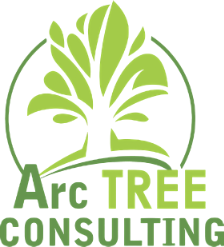Trees provide important social, environmental and economic benefits to our community. But as large biological structures impacted by natural forces, they store potential risk for personal injury, property damage, and disruption of services (utilities, road access, etc).
Do you have a tree in your landscape that you are concerned about? Tree risk management responsibilities are not limited to commercial property managers, and landlords; homeowners may be liable for damages caused by failed trees located on their property. If you live closely with large trees or are legally responsible for them, periodic risk assessment is a good management practice to adopt. Arc Tree Consulting offers qualitative risk assessment, reporting and mitigation recommendations based on the most up to date industry standards.
What is Tree Risk Management?
Tree risk management is a process performed by the property owner and involves the application of policies, procedures and practices used to identify, evaluate, mitigate, monitor and communicate tree risk. For the residential home-owner, this process may be more simple, but still involves determining an “acceptable” level of risk for their trees based on consequences and liability.
Levels of Risk assessment
There are three levels of assessment: limited visual, basic and advanced. The most commonly used for individual trees is the basic assessment which includes a full 360° inspection from the ground and identifies: species, health, structure, damage or defects, presence of decay, and the presence of contributory site conditions. These aspects are then evaluated to determine likelihood of failure, presence of targets, likelihood of failure impacting a target, and the severity of impact consequences to assign the tree an overall risk rating.
Mitigation and Re-Inspection Intervals
After the various risks associated with the tree have been identified and rated, there are often many options to mitigate or reduce risk other than tree removal. Some of these options include: pruning, supplemental support systems, lightning protection systems, improving tree vitality, relocating targets, and restricting access to failure target zones. If the determination is made to retain the tree and perform risk mitigation, it is important to maintain a re-inspection program with clearly defined intervals and criteria.

